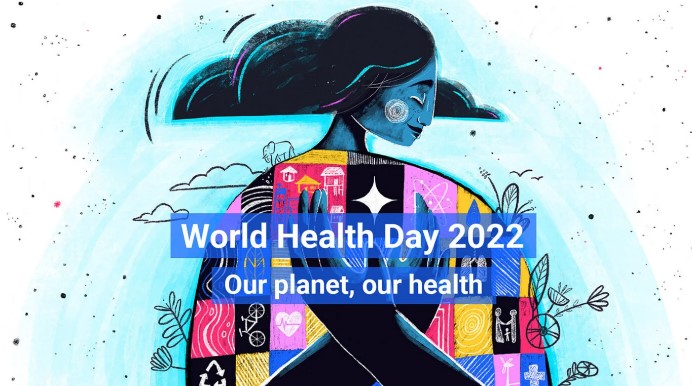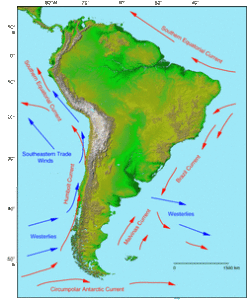Il y a trop de fric en jeu
Het wereldwijd verbruik aan pesticiden bedraagt een paar duizend ton per minuut. Dat is geen klein beetje. Het is dus niet verbazingwekkend dat we overal pesticiden terugvinden, zelfs in het haar van de Europarlementariers. Niemand twijfelt er nog aan dat de mens is blootgesteld aan pesticiden. Maar weet men ook dat ze ons ziek maken, ons hormonaal evenwicht verstoren; weet men dat het sluipmoordenaars zijn die veel levens op hun geweten hebben. Meer dan 60 jaar geleden zei Rachel Carson al: … Het is nog maar de vraag of een beschaving een brutale oorlog tegen het leven kan voeren zonder zichzelf te vernietigen, en zonder het recht te verliezen beschaafd genoemd te worden.
The worldwide application of pesticides amounts to a few thousand tons per minute. That’s not a little bit. So, it is not surprising that we find pesticides everywhere, even in hair samples of European Parliament members. No one doubts that people are exposed to pesticides. But do we know that they make us sick, disturb our hormonal balance; do we know that they are silent killers who have many lives on their consciences. More than 60 years ago, Rachel Carson wrote: … The question is whether any civilization can wage relentless war on life without destroying itself, and without losing the right to be called civilized.
La présence de pesticides interdits dans l’Union européenne dans ces échantillons est préoccupante. Ce résultat est frappant mais pas totalement inattendu. Nous avons déjà constaté la présence de résidus dans les aliments et fruits importés et, pire encore, nous savons que beaucoup de ces pesticides persistent dans l’environnement, parfois pendant de multiples années après leur interdiction. Cette constatation indique l’insuffisance du système d’homologation, qui permet l’autorisation de pesticides sur le marché dont la toxicité n’est pas correctement évaluée. Cependant, lorsqu’une substance est interdite, la procédure de retrait du marché est laborieuse et difficile, souvent truffée d’exemptions, ce qui permet aux États membres de continuer à utiliser des produits toxiques pendant très (trop) longtemps.
Les résultats mettent en évidence l’ampleur de la contamination de l’environnement par les pesticides, un fait attesté par des preuves scientifiques convaincantes. Les pesticides sont surtout utilisés en agriculture. Par conséquent, on retrouve maintenant les résidus dans l’air, le sol, l’eau et les organismes vivants. Les voies de contamination sont multiples. Leur omniprésence a malheureusement un impact dévastateur sur la santé humaine ainsi que sur la biodiversité ‒ p.ex. sur les pollinisateurs.
Face à l’existence d’alternatives agricoles éprouvées (p.ex. la lutte antiparasitaire intégrée, l’agroécologie et l’agriculture biologique), l’Union européenne et ses États membres doivent s’empresser de prendre des mesures structurelles pour arrêter la pollution chimique planétaire et restaurer les écosystèmes.
Le nouveau rapport PAN Europe – Ce rapport fait référence à une évolution dangereuse. Il révèle l’échec total d’une loi européenne pour interdire les pesticides les plus nocifs (Pesticide Action Network 2022).
Les fruits d’automne sont fortement contaminés par la catégorie de pesticides les plus dangereux, selon les dernières données gouvernementales. Les taux étaient très élevés : 49% des poires vendues étaient contaminées, 44% des raisins de table, 34% des pommes, 29% des prunes et 25% des framboises.
Les concentrations des résidus de pesticides sont liées à un risque accru de cancer, de malformations congénitales, de maladies cardiaques et d’autres affections graves et elles sont toxiques pour l’environnement. Et d’ailleurs, la plupart sont une menace, même à de très faibles doses. Le problème s’aggrave ! Pesticide Action Network Europe a évalué les résultats de 44137 échantillons de fruits frais analysés par les gouvernements entre 2011 et 2020 et a constaté que la contamination des pommes, des poires et des prunes a presque doublé en moins de 15 ans.
Le rapport nous montre comment l’industrie et les fonctionnaires ont protégé les pesticides les plus toxiques contre les encouragements politiques en faveur d’une agriculture durable. Il parut 60 ans jour pour jour après la publication de Printemps silencieux (Carson 1962). Le livre de Rachel Carson a alerté le public sur les dangers des pesticides et a contribué au déclenchement du mouvement environnemental moderne. Le message central du livre est un pesticide treadmill, une voie sans issue qui oblige les agriculteurs à utiliser de plus en plus de produits chimiques pour tuer les ravageurs coriaces. Ainsi les agriculteurs deviennent les prisonniers de l’industrie chimique ; cette voie augmente les profits de l’industrie, mais selon les chercheurs elle est loin d’être imparfaite.
Depuis la publication du livre le 27 septembre 1962, l’utilisation des pesticides a augmenté et l’extinction des espèces due aux pesticides est 1000 fois plus rapide que la normale. De plus, le coût des maladies liées aux pesticides est estimé à 32 milliards d’euros.
Les intérêts du lobby des pesticides sont-ils plus importants que notre santé ¾ Plus de 30000 Belges luttent actuellement contre la maladie de Parkinson, une maladie complexe qui n’a pas vraiment de remède. Depuis des années, des études font ressortir le lien avec l’utilisation des pesticides ; cela rend les agriculteurs particulièrement vulnérables. En France, la maladie est reconnue comme maladie professionnelle depuis dix ans. Voilà l’annonce d’un article troublant dans le journal flamand De Morgen (De Smet & Hirschböck 2022).
L’accord de gouvernement du 30 septembre 2020 stipule que le gouvernement fédéral adoptera une attitude ambitieuse en vue de réduire les matières chimiques. Mais que signifie une « attitude ambitieuse » ? Le ministre fédéral de l’Agriculture a voté à la Commission européenne en octobre pour l’extension temporaire du glyphosate. Son attitude ne devrait pas nous surprendre ; même dans les décisions et les votes précédents sur les pesticides, comme ceux sur les restrictions sur la poussière toxique et le sulfoxaflor, il a voté contre la protection des pollinisateurs. Le ministre suit le lobby des pesticides, ignorant ainsi le risque de dommages à la santé et à la biodiversité. Cependant, en Belgique, nous payons 4,4 milliards par an en coûts de santé liés aux perturbateurs hormonaux (au pluriel), dont les pesticides sont la majeure partie.
On peut se demander si une civilisation peut mener une guerre brutale contre la vie sans s’autodétruire, et sans perdre le droit d’être appelé civilisée (Carson 1962).
Pourquoi faut-il toujours énormément de temps pour reconnaître les dangers environnementaux, même si on les connaît depuis des années ? L’article de Dedieu (2021) nous montre que l’écart entre les connaissances et les mesures, qui en découlent, résulte non seulement de l’influence secrète des entreprises sur les décisions et l’expertise publiques, mais aussi de l’expertise et des mécanismes bureaucratiques, qui sous-tendent la réglementation des pesticides. Ce mécanisme favorise un déni organisé, où les organismes de réglementation excluent systématiquement les connaissances inconfortables qui pourraient remettre en question l’évaluation officielle des risques, un déni organisé qui maintient légalement l’ignorance.
Carson (1962). Silent Spring, Houghton Mifflin Harcourt, pp. 400
De Smet & Hirschböck (2022). Voor ons land zijn de belangen van de pesticidenlobby belangrijker dan onze gezondheid, De Morgen, 15 november
Dedieu (2021). Organized denial at work: The difficult search for consistencies in French pesticide regulation, Regulation & governance 16, 3, 951 – 973
Pesticide Action Network (2022). Pesticide Paradise: How industry and officials protected the most toxic pesticides, https://www.pan-europe.info/
POLLINIS (2022). Pestide Contamination among the Members of the European Parliament, Scientists and Journalists – The Presence of Pesticides in 44 Hair Samples, pp. 15











